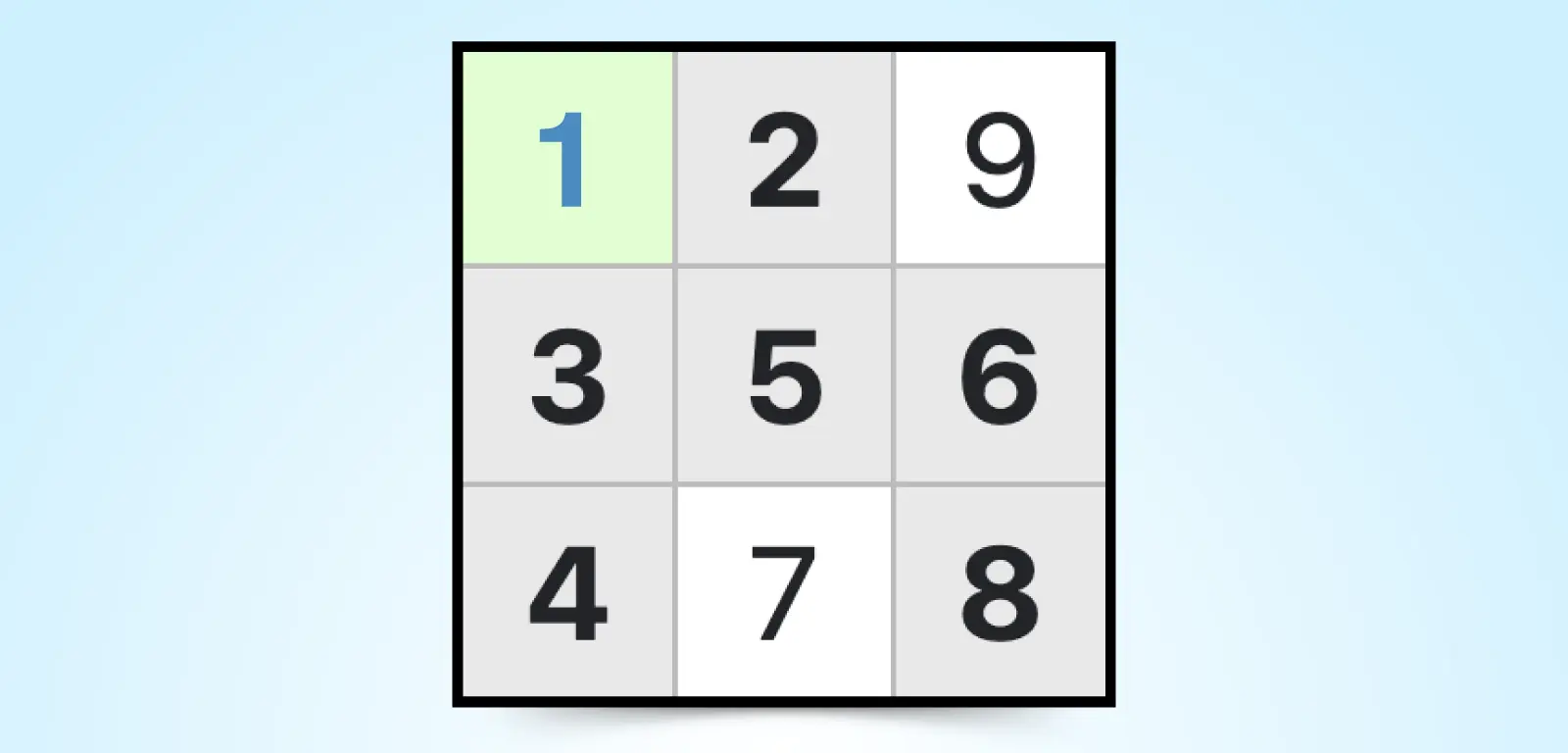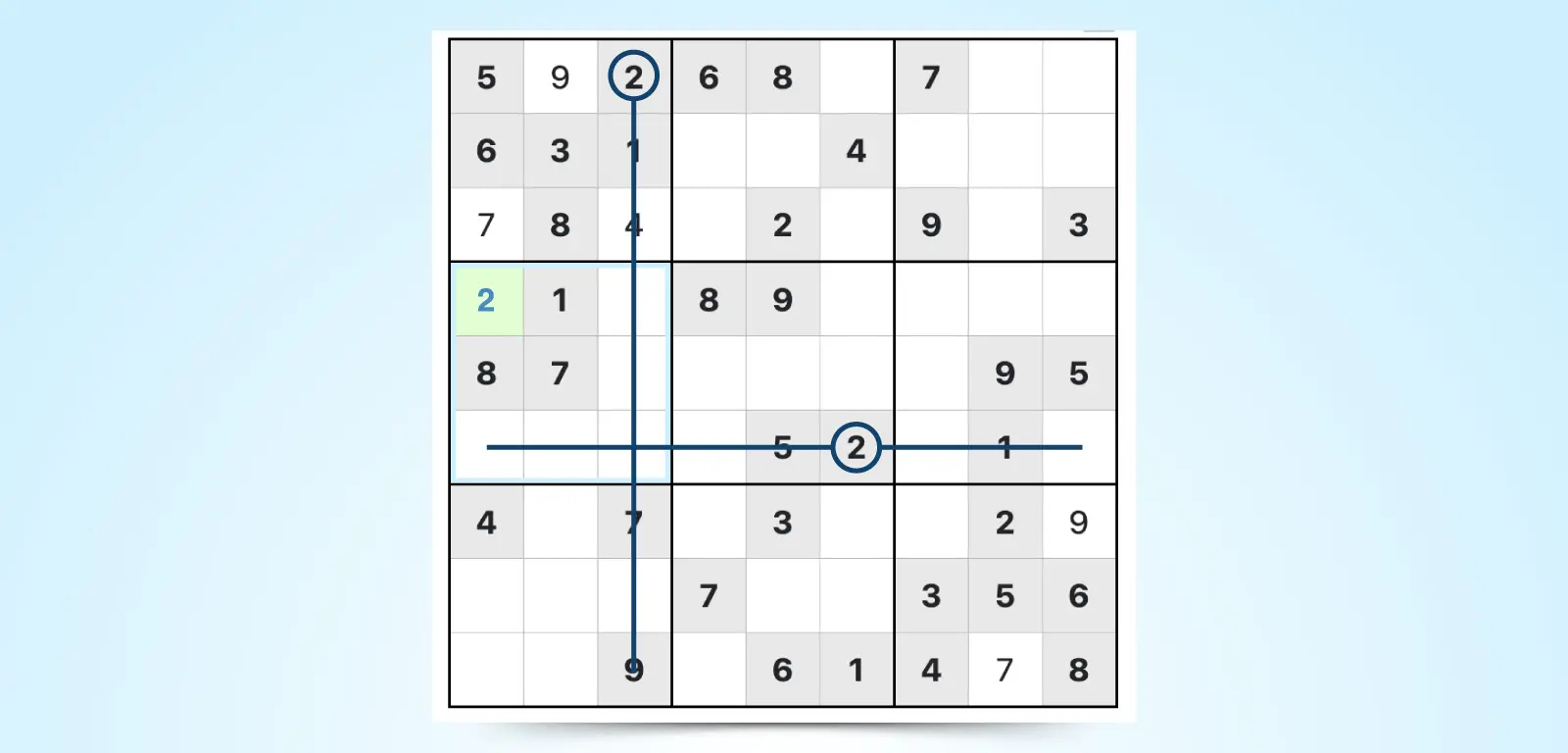How to Play Easy Sudoku
Easy Sudoku is a great starting point for beginners because it is pre-filled with many numbers, allowing you to use simple techniques to solve the puzzle. To complete it, fill the 9x9 grid with numbers 1 through 9, avoiding duplicates in each row, column, and 3x3 block.
Easy Sudoku Strategies
These basic tips and strategies will help build a strong foundation for more advanced puzzles. Easy Sudoku is about observing the grid and filling in the easiest answers first. Every time you add a number, you narrow down the possibilities for other cells and get closer to solving the puzzle.
Naked Singles
A naked single is the last possible number that can be placed in a row, column, or 3x3 block. When one of those areas has eight digits, it’s easy to determine the ninth. For example, in this 3x3 block the only number that isn’t present is 1, so 1 is the correct answer for the top left cell.

Crosshatching
Choose a number to solve for, and then draw vertical and horizontal lines through columns and rows where the number already exists to eliminate cells where it can be placed. In the example below, we’ve isolated the left-middle 3x3 block and chosen the number 2. Since there is a 2 in the rightmost column and a 2 in the bottom row, the only place a 2 can be placed in that 3x3 block is the top left corner.

Candidate Numbers
Candidate numbers are numbers that could potentially be placed in a cell, but they’re not the definite answer. Noting candidate numbers in each cell can help with the process of elimination and allow you to solve the puzzle faster without solely relying on memory.
If the same row, column, or 3x3 block has a pair of candidate numbers, called a naked pair, you can deduce that the numbers must occupy one of those two cells and eliminate those candidate numbers from surrounding cells. In the example below, 2s in the bottom row are eliminated from the first 3x3 block because of the naked pair (1, 2) in the middle row.
If there is only one candidate number noted in a row, column, or block, it is the answer for that cell. This is known as a hidden single. For example, in the middle 3x3 block, 9 is only listed as a candidate number once. That makes it the answer for that cell.

By practicing these techniques, you will begin to recognize patterns and master the easy Sudoku level.